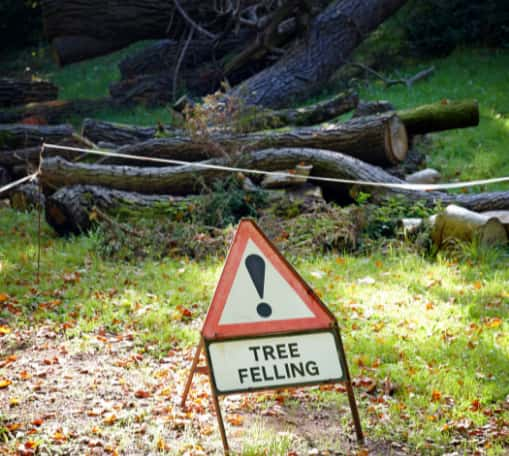Introduction: Trees are a beautiful and essential part of our natural environment, providing shade, oxygen, and visual appeal. However, certain circumstances can turn trees into potential hazards, posing risks to people and property. In such cases, tree surgery plays a vital role in ensuring safety and maintaining the balance between the benefits and potential dangers of trees. In this blog post, Linton Tree Surgeons will delve into the topic of tree surgery for hazardous trees, emphasising the importance of professional intervention to mitigate risks and safeguard your surroundings.
- Identifying Hazardous Trees: The first step in addressing hazardous trees is identifying them. Hazardous trees may exhibit signs such as leaning trunks, cracked or hanging branches, decay, or disease. Signs of structural instability, proximity to power lines or structures, and overhanging branches can also indicate potential risks. Regular tree inspections by certified arborists can help identify hazardous trees and determine the best course of action.
- Assessing the Risks: Once a hazardous tree is identified, a professional tree surgeon will conduct a thorough risk assessment. This assessment takes into account the tree’s condition, location, potential targets, and the likelihood of failure. Understanding these factors allows the tree surgeon to develop an appropriate plan for mitigating the risks associated with the tree.
- Tree Pruning and Branch Removal: In some cases, hazardous trees can be made safer through strategic pruning and branch removal. This process involves removing dead, diseased, or damaged branches to reduce the weight and potential hazards. Tree surgeons employ specialised techniques and equipment to safely prune trees and ensure the preservation of their health and natural form.
- Tree Removal: In severe cases where the risks cannot be effectively mitigated through pruning, tree removal becomes necessary. Professional tree surgeons are trained to safely and efficiently remove hazardous trees, ensuring minimal impact on the surrounding environment. Tree removal may involve techniques such as sectional dismantling or using cranes to lower large sections of the tree safely to the ground.
- Emergency Tree Services: In situations where a hazardous tree poses an immediate threat, emergency tree services are available. Tree surgeons can respond quickly to address urgent situations, such as trees damaged by storms or those posing imminent danger to structures or people. Emergency tree services ensure the timely and safe removal or stabilisation of hazardous trees.
- Environmental Considerations: Tree surgery for hazardous trees prioritises safety while also considering the environmental impact. Whenever possible, tree surgeons aim to preserve healthy trees and minimise disturbance to the surrounding ecosystem. They employ techniques that prioritise the tree’s well-being and integrate sustainable practices to maintain a harmonious balance between safety and conservation.
Conclusion: Tree surgery plays a crucial role in mitigating the risks associated with hazardous trees, ensuring safety in our surroundings. By identifying hazardous trees, assessing the risks, and employing appropriate measures such as pruning or removal, professional tree surgeons help safeguard our properties and protect us from potential harm. At Linton Tree Surgeons, our dedicated team of certified arborists specialises in tree surgery for hazardous trees, ensuring expert knowledge, experience, and a commitment to safety. Contact us today to address any concerns regarding hazardous trees and benefit from our professional tree surgery services.
Call us on 01223 919 495 or click here to complete our contact form and see how we can help with your tree’s needs.

